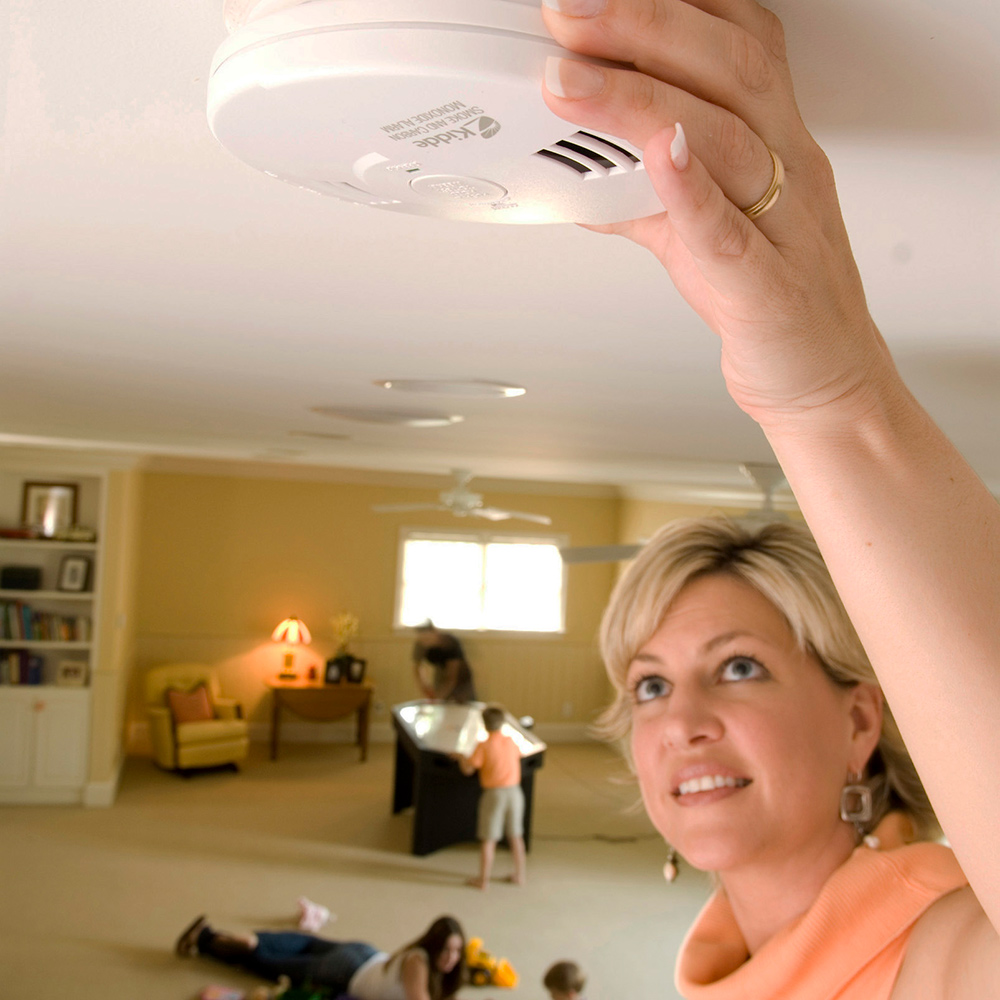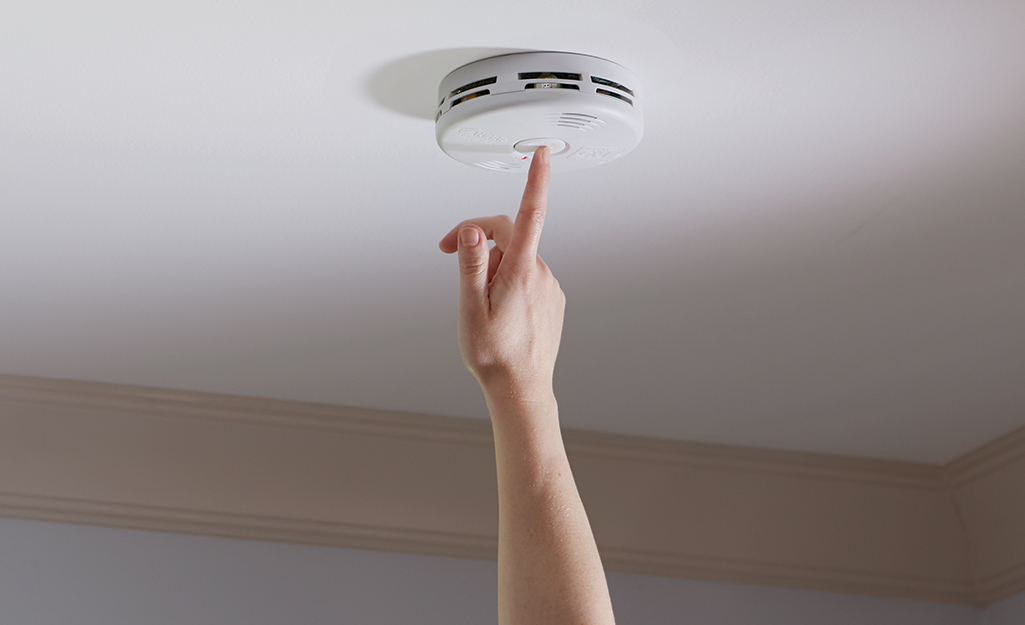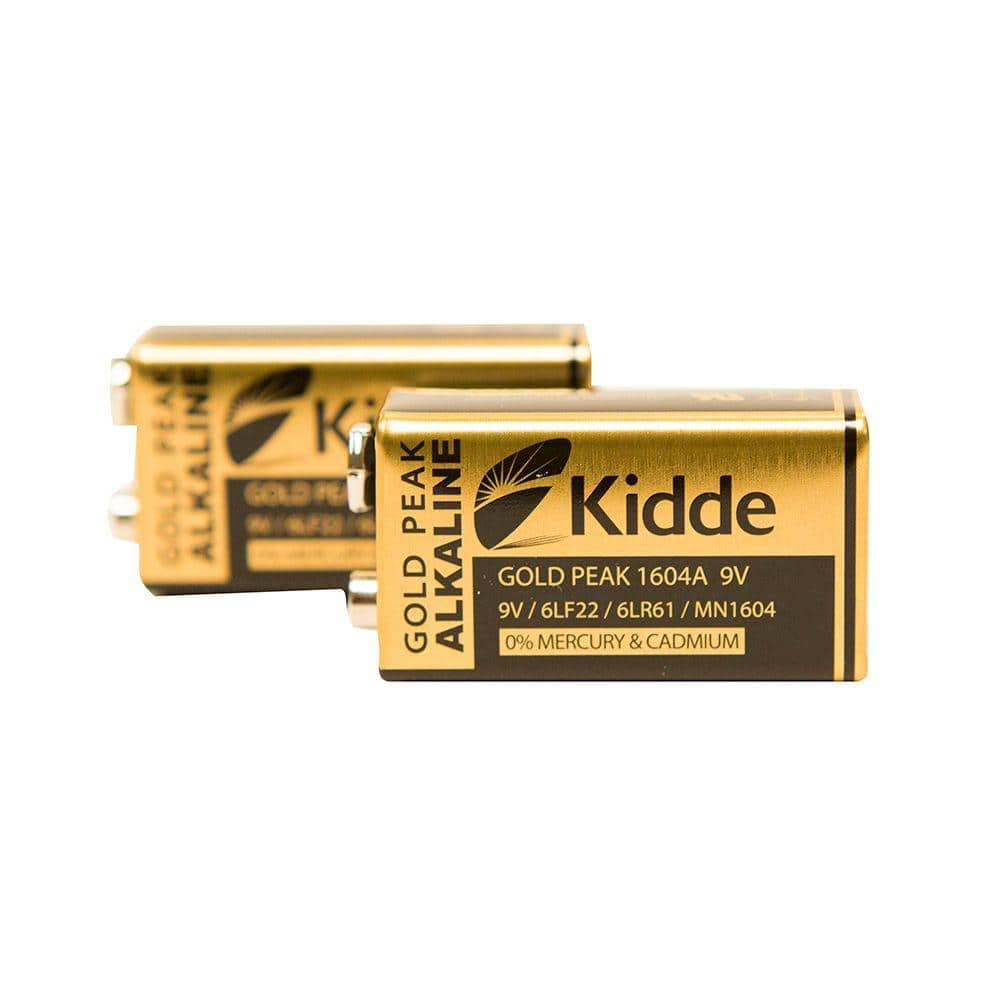Carbon Monoxide Sources

Last updated September 7, 2023
Carbon monoxide is the byproduct of burning fuels commonly found in homes. Natural gas, propane, wood and gasoline can all produce carbon monoxide. Inhaling too much of it can have fatal consequences, and without functioning carbon monoxide detectors, you won’t know that you’re in danger.
This guide addresses questions like where does carbon monoxide come from, what is carbon monoxide poisoning and how to prevent carbon monoxide poisoning from harming your family.
Table of Contents
Dangers of Carbon Monoxide
Carbon Monoxide Sources and Prevention
Placement of Carbon Monoxide Detectors
Dangers of Carbon Monoxide

Carbon monoxide is a colorless, odorless and tasteless gas that can be fatal to you, your family and your pets.
Sometimes called the “silent killer,” carbon monoxide inhibits the blood’s capacity to carry the oxygen that cells need to function. Everyone is at risk for carbon monoxide poisoning. Infants, the elderly and those with chronic breathing or heart problems are more likely to become sick from CO, the abbreviation for carbon monoxide.
Early symptoms of carbon monoxide poisoning are described as “flu-like” and can include weakness, headache, dizziness, confusion, nausea and chest pain.
Fresh air can help reverse mild carbon monoxide symptoms in home settings, but these effects of poisoning may go unnoticed if you are sleeping. When you breathe in too much carbon monoxide, it can lead to cardio-respiratory failure and death.
Never assume that a carbon monoxide detector is giving a false alarm. If your CO alarm sounds, immediately leave the home and call the fire department.
Carbon Monoxide Sources and Prevention

Carbon monoxide causes come from any fuel-burning apparatus, such as gas appliances, fireplaces and combustion engines.
Under normal circumstances, carbon monoxide sources vent the toxic gas outside. However, malfunctioning, leaking or improperly installed equipment can lead to higher carbon monoxide levels in the home.
Potential sources of carbon monoxide and how to prevent CO buildup include:
- Gas stovetops and ovens can be sources of carbon monoxide in the home when used without proper ventilation. Keep your stove and range hood clean and in good working condition. Never use the oven as a heating source.
- Heating systems, water heaters and any other gas, oil or coal burning appliances can be sources of carbon monoxide in the home. These should be serviced by a qualified technician every year.
- Fireplaces – both wood-burning and gas varieties – produce carbon monoxide. Have your chimney inspected or cleaned annually to avoid CO in the home. Always open the flue when using your fireplace.
- Gas-powered portable generators produce high levels of carbon monoxide when in use. Always use generators outdoors. Operate them 25-feet from the home and away from doors, windows and vents.
- Some CO detectors can be hardwired to use your home’s electricity. If using a generator during a power outage, be sure that your detectors are battery-operated or have a battery backup.
- Charcoal and gas grills emit CO and should never be used in an enclosed space, including garages.
Residents of apartments should also follow the guidelines for carbon monoxide and smoke detectors in single-family homes. Apartments are typically smaller than single-family homes. With fewer windows and doors, CO levels can build up faster than in large homes.
Unless it’s an electric variety, your vehicle is a source of carbon monoxide. Take precautions to avoid carbon monoxide poisoning.
- A qualified mechanic should check the exhaust system annually. Even a small leak can produce excessive CO levels inside the vehicle.
- Never let the engine run inside of an attached garage. Unsafe levels of carbon monoxide can seep into the home. Having the garage door open could even assist the CO drift into living spaces, as the outside air can push the gas inside rather than allowing it to escape.
- If you must drive with the vehicle’s tailgate open, be sure to also have the windows open. This allows air to circulate and prevents CO-filled exhaust from being pulled into the vehicle.
Placement of Carbon Monoxide Detectors

Every home with at least one fuel-burning appliance, attached garage or fireplace should have carbon monoxide alarms. Install carbon monoxide detectors on each level of your home, including the basement and inside of an attached garage.
It is recommended that carbon monoxide alarms be installed inside or directly outside of sleeping areas. The effects of carbon monoxide aren’t detectable while you’re sleeping, but the alarm will wake you.
Installation guidelines from the manufacturer can vary for specific models. Some types, for example, must be installed on a wall or ceiling, while others are suitable for placement on a tabletop or shelf.
Carbon monoxide detectors with digital displays should be installed on a wall at eye level on to make it easier to view the readout. Some models are operated by plugging into an outlet but keep in mind that any CO alarm should be installed out of the reach of children.
When deciding where to install carbon monoxide alarms in your home, know that some locations should be avoided. To prevent inaccurate readings of carbon monoxide levels:
- Do not install within 15-feet of heating or cooking appliances.
- Do not install near ventilation openings, including vents and chimneys.
- Do not install near ceiling fans, doors or windows.
- Do not install on a switched or dimmer-controlled outlet.
- Do not install in very humid areas such as the bathroom.
Follow additional manufacturer’s requirements and recommendations for installation and replacement of smoke and carbon monoxide detectors.
Be sure to include carbon monoxide detectors when looking for your home's fire safety equipment.
Shop online. The Home Depot delivers online orders when and where you need them. Need a ladder to reach your carbon monoxide detectors? Rent one from The Home Depot Rental.































